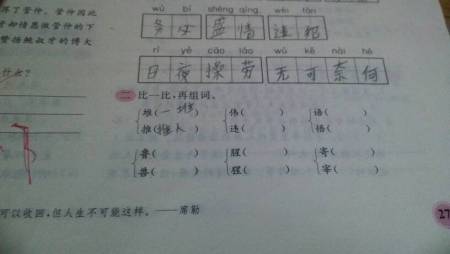一、广东 英文简介
Guangdong A provinceon the South China Sea coast of the People's Republic of China. Guangdong is also known as Canton or Kwangtung Province in English.The provincial capitalGuangzhou and economic hub Shenzhen are among the most populous and important cities in China. In Guangdong different area has there are speak, there are Mandarin,Cantonese, Teochew and Hakka.Hong Kong and Macau, while historically parts of Guangdong before becoming colonies of the United Kingdomand Portugal respectively, are special administrative regions (SARs). Guangdong is very diversification place.可以适当修改一下,主要介绍了一下广东的地理位置,广东的省会以及经济区,和广东文化。希望对你有帮助.
二、介绍广东的英语作文
The capital is Guangzhou. On coastal islands and adjacent mainland territories are Hong Kong and Macao. The island of Hainan, once part of Guangdong, became a separate province in 1988. The hilly coastline is the longest of any province (constituting more than one fifth of the country's total coastline); the only real breaks to the interior are at Shantou on the Han River delta and at Guangzhou at the Pearl River delta. Inland transportation is good; before the 1950s water routes predominated, but now railroads and highways have taken over the freighting.
Between 15% and 20% of the province is under cultivation, primarily in the delta areas, which are among the most populous in China. There the climate is subtropical and the rainfall heavy most of the year. Two or three crops are generally harvested. Guangdong is the country's leading producer of sugarcane; rice and silk are other major crops, although the silk industry is no longer as important as it once was. Other commercial crops include hemp, tobacco, tea, tropical and subtropical fruits, and peanuts. Fishing in Guangdong accounts for about 20% of China's catch.
Guangdong has tungsten, iron, manganese, titanium, tin, lead, uranium, and bismuth deposits. Shale oil deposits are found in the south, and there is offshore drilling for oil; the province has several oil refineries. There are also lumber and paper mills, and food-processing, printing, cement, and fertilizer plants. The large handicraft industry, which once thrived on European trade, has dwindled, but the apparel and electronics industries grew significantly in the late 20th cent.
Guangzhou, an “open” economic city, is still the heart of the province, with a great range of manufactures. Zhanjiang, another “open” city, has grown significantly due to foreign trade and investment since the late 1970s. Three of the country's first four special economic zones were established in Guangdong, at Shantou, Shenzhen, and Zhuhai. In early 1990s the province accounted for two thirds of China's exports; its portion has slowly decreased as economic development has increased in other provinces. The return of Hong Kong to China in the late 1990s, however, has spurred additional growth in areas of Guangdong near the Hong Kong border.
The Cantonese constitute the bulk of Guangdong's population, which is non-Mandarin speaking. The people of the province are known around the world; one half of the overseas Chinese are from Guangdong province.
The region, originally settled by Miao, Li, and Yao tribes, continually attracted migrating groups from the north; some (notably the Hakka) retained their own languages. Guangdong came under Chinese suzerainty during the unification under the Ch'in dynasty (c.211 B.C.), and was more firmly absorbed during the Han dynasty. Guangdong was the main scene of China's early foreign contact, chiefly through Guangzhou; there was trade with the west during the Roman Empire, trade with the Arabs during the T'ang dynasty, and European trade that originated during the 16th cent. with the Portuguese. Guangdong has been a center of revolutionary activity; there the Kuomintang was formed (1912) under the leadership of Sun Yat-sen, and there Chiang Kai-shek began his drive (1920s) for the unification of the country.
三、广东的英文介绍
广东省古时候一直是“百越之族”居住的地域,清政府在这里设置了广东省,于是广东的名称沿用至今。 这里自古就是我国的富庶之地,早在秦汉时代已经有对外贸易和文化交流活动,到近代,广东更是成为商业发达的地区。由于地理条件及历史渊源,这里也是华侨之乡,许多侨民出于对家乡的眷恋之情都会经常回乡,促进了广东省旅游业的发展。 广东省聚集最多奇特景观的地区在粤北,粤北包括韶关和清远,那些山地的自然景观非常美丽,有以丹霞山和金鸡岭为代表的丹霞地貌,有喀斯特地貌的连南、阳山、英德山群及溶洞;粤西则有着漫长而曲折的海岸线,拥有为数众多的优质海滩;粤东的梅州、河源、潮汕和惠州地区一向以其独特的客家文化而在广东自成体系,民风古雅,古文化遗存丰富,近年来也成为旅游热点。
Guangdong Province ancient times always is “hundred races” the housing region, the Qing government has established Guangdong Province in here, therefore Guangdong's name continues to use until now. Here was our country's rich and populous place since old times, as early as already had the foreign trade and cultural exchange in the the Qin and Han Dynasty time, to the modern times, Guangdong becomes the commercial developed area.As a result of the geography condition and the historical origin, here also is township of the overseas Chinese, many aliens stemming from could return to home village to the hometown sentiment of attachment, to promote the Guangdong Province tourism development frequently. Guangdong Province gathers most unusual landscapes the area in north Kwangtung, north Kwangtung including Shaoguan and Qingyuan, these mountainous region natural landscape is extremely beautiful, has take Danxia Mountain and the golden rooster range as representative's Dan rosy cloud landform, has karst landform Liennan, Yangshan, the English Germany mountain group and the limestone cave; Yuexi has long and the winding coastline, has the numerous high quality beach; But Guangdong Province's Meizhou, the river source, Chaoxian and the Huizhou area always from becomes the system by its unique Hakkas culture in Guangdong, the common social practice is classically elegant, the ancient civilization remains richly, in recent years also became the traveling hot spot.







